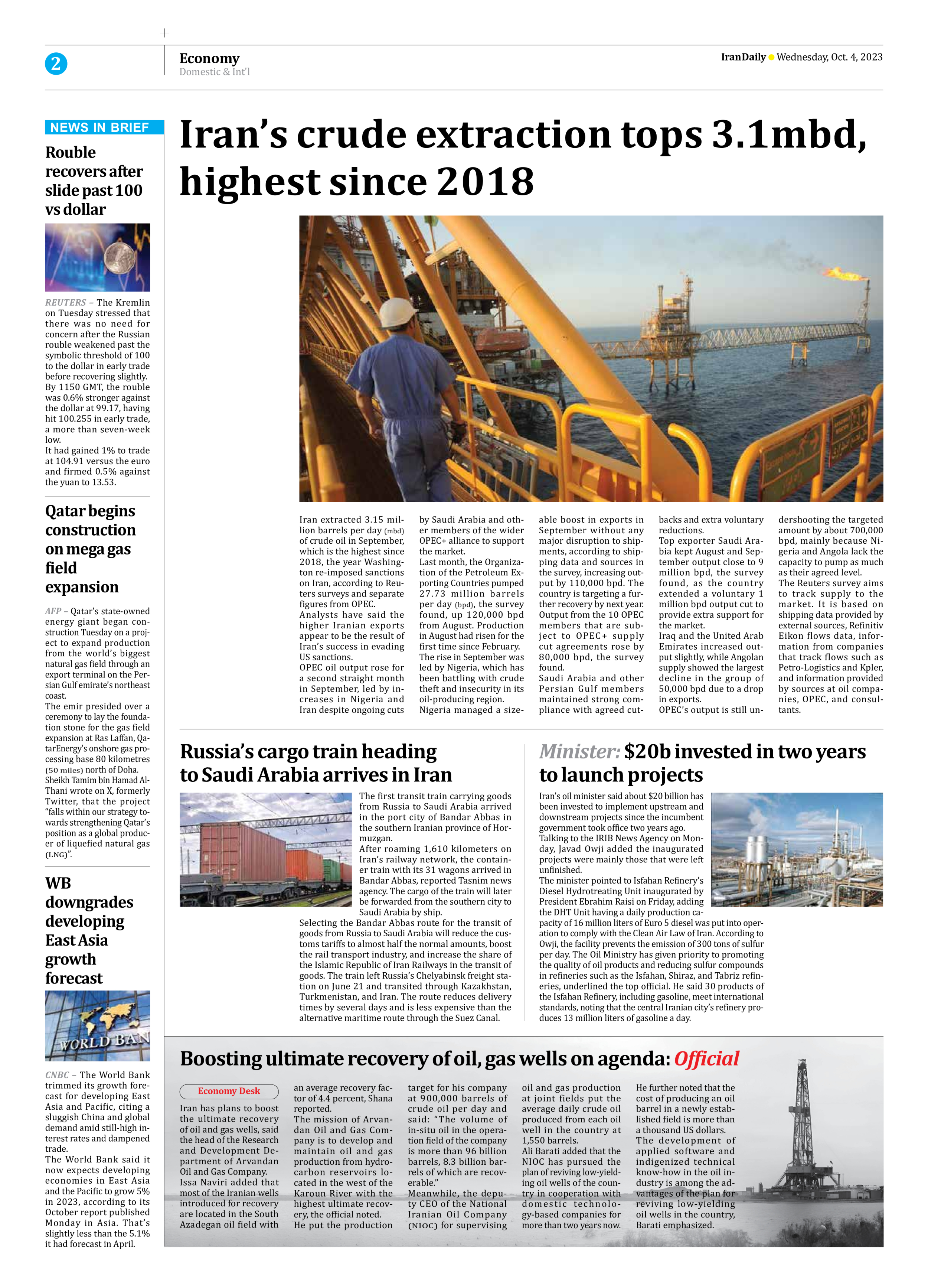
Iran’s crude extraction tops 3.1mbd, highest since 2018
Iran extracted 3.15 million barrels per day (mbd) of crude oil in September, which is the highest since 2018, the year Washington re-imposed sanctions on Iran, according to Reuters surveys and separate figures from OPEC.
Analysts have said the higher Iranian exports appear to be the result of Iran’s success in evading US sanctions.
OPEC oil output rose for a second straight month in September, led by increases in Nigeria and Iran despite ongoing cuts by Saudi Arabia and other members of the wider OPEC+ alliance to support the market.
Last month, the Organization of the Petroleum Exporting Countries pumped 27.73 million barrels per day (bpd), the survey found, up 120,000 bpd from August. Production in August had risen for the first time since February.
The rise in September was led by Nigeria, which has been battling with crude theft and insecurity in its oil-producing region.
Nigeria managed a sizeable boost in exports in September without any major disruption to shipments, according to shipping data and sources in the survey, increasing output by 110,000 bpd. The country is targeting a further recovery by next year.
Output from the 10 OPEC members that are subject to OPEC+ supply cut agreements rose by 80,000 bpd, the survey found.
Saudi Arabia and other Persian Gulf members maintained strong compliance with agreed cutbacks and extra voluntary reductions.
Top exporter Saudi Arabia kept August and September output close to 9 million bpd, the survey found, as the country extended a voluntary 1 million bpd output cut to provide extra support for the market.
Iraq and the United Arab Emirates increased output slightly, while Angolan supply showed the largest decline in the group of 50,000 bpd due to a drop in exports.
OPEC’s output is still undershooting the targeted amount by about 700,000 bpd, mainly because Nigeria and Angola lack the capacity to pump as much as their agreed level.
The Reuters survey aims to track supply to the market. It is based on shipping data provided by external sources, Refinitiv Eikon flows data, information from companies that track flows such as Petro-Logistics and Kpler, and information provided by sources at oil companies, OPEC, and consultants.







